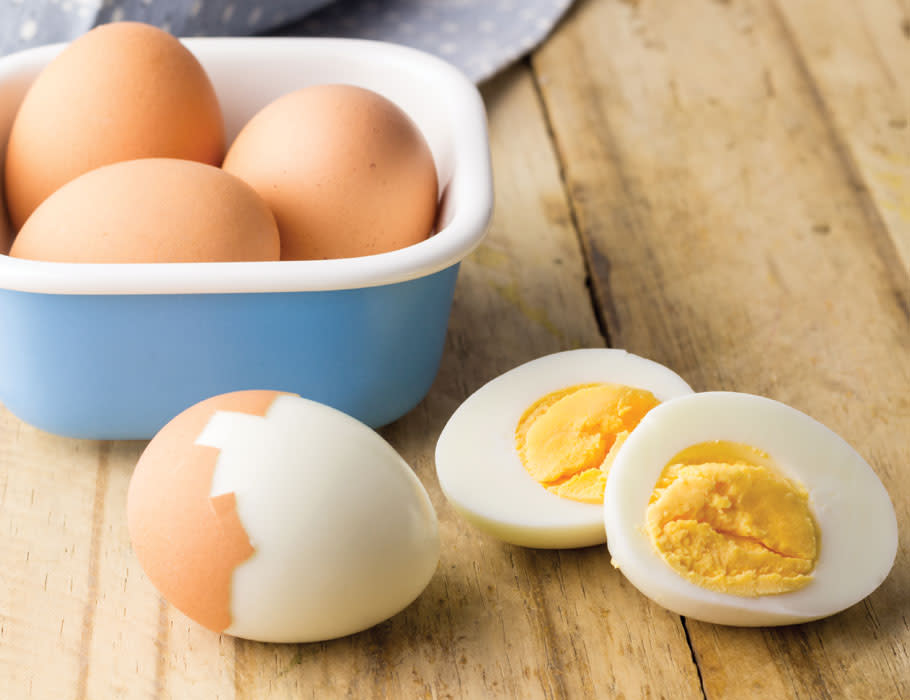How to Make Perfect Hard-Boiled Eggs
With Easter right around the corner, I thought it might be the perfect time for a quick crash course into hard boiled eggs. I will walk you through the traditional process for how to make hard-boiled eggs, including a steamed version, and introduce you to an awesome product you can buy to make hard boiling eggs even simpler. Lets get crackin'!
By Madalyn Bendgen

Photo: Getty Images
(Note: This post contains affiliate links. As an Amazon Associate, we earn from qualifying purchases made through affiliate links.)
How to Make the Perfect Hard-Boiled Eggs
Most of you probably already know how to hard boil eggs, but maybe you will pick up an added tip that you might not have known. To get started place eggs in a saucepan in a single layer, making sure they’re not too crowded. Overcrowding the pan can cause the eggs to crack if they bump into each other. Add enough cold water to cover eggs by 1 inch. Next, heat the pan over high heat just until boiling. Once boiling, shut off heat, remove pan from burner and cover pan with a lid. Let eggs stand, covered, in hot water for about 12 minutes. While your eggs are cooking grab a bowl and prepare and ice water bath for the eggs to be placed in to stop cooking. Once the eggs have cooled you can peel them or store them in the refrigerator until you’re ready to use them.
How to Make Steamed Hard-Boiled Eggs
Now this is one of my favorite ways to hard cook eggs. I find that steaming the eggs makes peeling the eggs way easier. Also, the older the egg, the easier to peel them, no matter the process you choose. Ok, back to steaming. To steam eggs, I find using a steamer pan works best. Fill the bottom saucepan with water, like assembling a double boiler. Then place eggs in the steamer pan over the pan of water. Cover pan with a lid, turn the heat to medium, and once you start to see steam, start the timer for 20 minutes. After 20 minutes, carefully remove the lid, let the steam release, and transfer the eggs to an ice water bath. Once the eggs have cooled completely, the shells peel off easily, taking none of the egg white with them. This process even works with fresh eggs. You won’t have as much white sticking to the shell after steaming like you would hard boiling fresh eggs.
Nordic Ware Microwave Egg Boiler
Alright, here is a product that makes quick work of hard-boiling eggs when in a hurry. My family, including my in-laws who turned us onto this product, are big fans of the Nordic Ware Microwave Egg Boiler. This product allows us to get hard boiled eggs in quickly for the morning breakfast rush. Simply open the egg cooker lid, remove the aluminum plate, and add water to the bottom about ⅔ full making sure the water won’t touch the plate. Put the aluminum plate back in, pale 1-4 eggs in the indentations on the aluminum plate, and place lid on top. Then place into the microwave, standing upright, and microwave the eggs on high for 8 minutes. (Check out your microwave voltage and cook according to the Microwave Egg Boiler directions.) One thing to remember is the egg cooker will be hot after microwaving, so let it sit in the microwave for 3-5 minutes before removing it. Then transfer eggs to an ice water bath and let cool completely. We love to use this during the week so we can get breakfast started and continue to get ready for work and school while the eggs cook and rest. Also, it is easy to clean and store.
Now that you know 3 simple ways to hard boil eggs, there’s nothing stopping you from adding this egg-celent source of protein to your diet. Put those hard boiled eggs to use in Deviled Eggs or a refreshing Cobb Salad.
Product Recommendations
Interested in cooking? Need some supplies?
Check out some of the tools we like. All products featured on Cuisine at Home are independently selected by our editors; we may earn an affiliate commission from qualifying purchases through our links.
